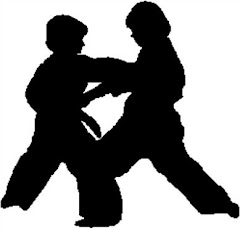
Karate Then and Now
Upon hearing the word “karate,” people often think of the physical aspects of this martial art. The kicks, punches, and other seemingly impossible moves of karate masters are just the surface of what is truly a martial art steeped in philosophy. For anyone who wants to get into karate, it would be advisable to understand some of the long history and deep philosophy that have helped to make karate what it is today. By understanding the philosophy and history of the defensive martial art known as karate, people will be better disposed to take advantage of the many physical and mental benefits that karate has to offer. This article will cover the basics of the history and philosophy of karate, as well as discuss karate in the contemporary context.
Karate: history of the martial art
Much like other forms of martial arts, karate has a long and colorful history. Karate originates from the Ryukyu Islands of Japan, though it is a martial art that has been heavily influenced by the Chinese kung-fu and the Koren taekwondo. In the 1300s and 1400s, numerous Chinese families moved to Okinawa, Japan and they brought with them different forms of Chinese martial arts. These martial arts as well as other parts of the Chinese culture were being assimilated into Japanese culture.
In the 1600s, a policy was enacted in Japan, banning the use of weapons. It was during this time that karate began to take root and flourish in Japan. The Japanese phrase “karate” means “empty hand,” because it was developed as a form of self-defense during the weapon ban. This martial art would take on many of the Chinese “kata” (“shape” or “model”) used in their martial arts, reinventing them and perfecting them into different karate kata, or fighting stances and postures. Numerous people would begin teaching different forms of karate in and around Japan from the 1800s and onwards.
Karate: a philosophy of honor
Many different forms of karate have developed throughout the years, each with its own philosophy and perception of the martial art. In its original context, however, the philosophy of karate is a form of self-defense that should only be used as a last resort. Those who practice karate train their bodies and their minds, promoting not only mental and physical health, but also spiritual health. The philosophy of karate is vast, but the most influential factors have been Taoism, Buddhism, and the code of Bushido.
Karate today
Karate has come a long way since its origins in the Ryukyu Islands. While there are still a number of people training and living in the traditional ways of karate, this martial art has become a popular sport. Numerous karate tournaments are held all around the world. Karate dojos, where people can go to learn and train in this martial art, have cropped-up all around the world. Since karate has become so wide-spread, many countries have developed their own styles of karate. In the Philippines, for example, arnis karate has developed as a combination of karate and the Filipino martial art of arnis.
Whether people are into karate as a sport, hobby, or profession, this martial art offers many physical and mental benefits. Beyond the physical and mental benefits, however, karate also has a rich history and philosophy that people can learn from. With its ability to enrich and improve the lives of those who study and practice it, karate is truly a powerful martial art.


No comments:
Post a Comment